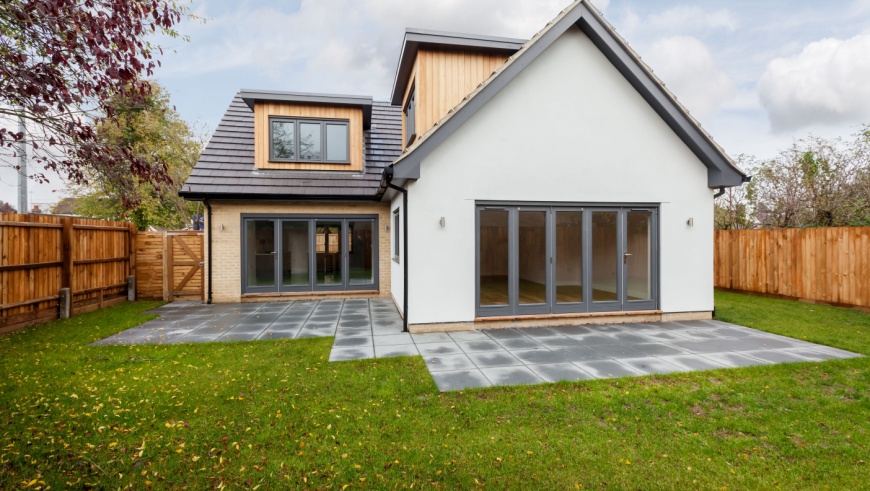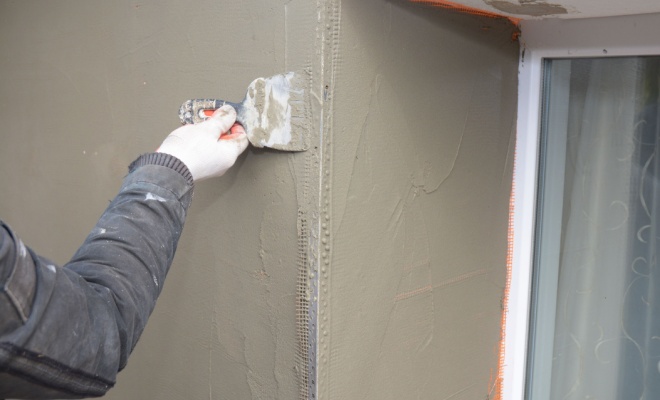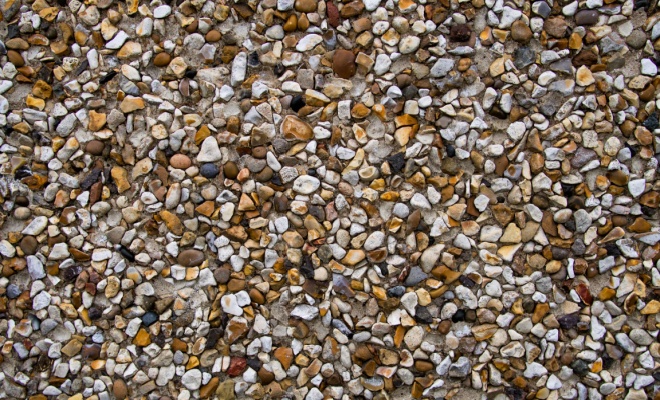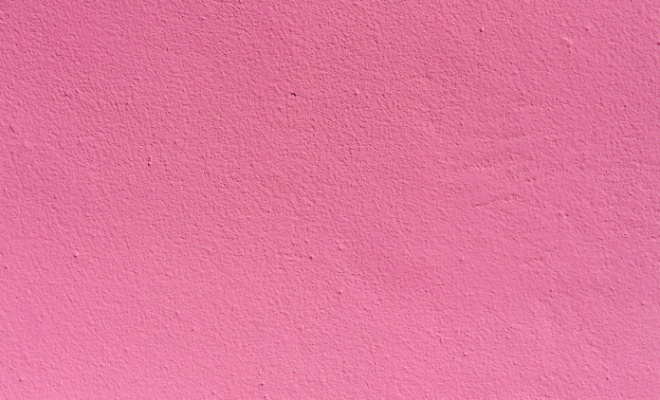House Rendering Cost
Last updated 29th May, 2024
Wondering about the cost of rendering a house?
In this guide, we unveil the complete rendering cost calculator UK, answering questions like "How much does rendering cost?" (for instance, for a 3 bed semi, expect around £3000 - £4000). We cover the rendering cost for houses of all sizes and types, including k rendering and cement render.
Keep reading to explore more about house rendering cost!

How Much Does Rendering Cost?
To scaffold a typical 3-bed semi-detached house, remove all the existing render, prep the surface (keying, stabilizing, brushed, etc) and apply two layers of smooth render; will cost around £3000-£4000.
What else do I need to consider?
This will not include the cost of painting. For a pebbledash finish add on around an extra £1000, plus if you want the pebbledash render painted then add on an additional £1000, as painting pebbledash is not an easy or quick task, and requires a brush which needs to be pressed into the render to get good paint coverage.
Most renderers charge per job rather than per day as there will be a lot of days waiting for the different stages to finish drying.
For a 3 bed semi-detached property a full rendering job usually takes around a week to complete.
House Rendering Prices
Here are a few average costs for hiring someone to render the external walls of a property:
| House Type | Finish Type | Avg. Cost | Duration |
|---|---|---|---|
| Semi-detached Bungalow | Smooth | £2500 | 3-6 days |
| Detached Bungalow | Smooth | £3000 | 4-7 days |
| Terraced House | Smooth | £3500 | 4-7 days |
| Semi-detached House | Smooth | £4000 | 5-8 days |
| Detached House | Smooth | £4500 | 7-10 days |
| Semi-detached Bungalow | Pebble-Dash | £2500 | 4-7 days |
| Detached Bungalow | Pebble-Dash | £4000 | 5-8 days |
| Terraced House | Pebble-Dash | £4750 | 5-8 days |
| Semi-detached House | Pebble-Dash | £5500 | 6-9 days |
| Detached House | Pebble-Dash | £6500 | 8-12 days |
Cost Breakdown Calculator
Individual costs for hiring a rendering company to fully render a 3 bed semi-detached house with a smooth finish - Total Cost: £4000
Materials
£2000
Tradesmen
£1200
Scaffolding
£800
What External Rendering Entails
Render is simply a sand and cement mix that is applied to exterior brickwork, originally to cover up and waterproof old bricks that were letting in moisture, but today a popular choice as an alternative wall finish. Render is usually applied in two coats; the second coat can be smooth or be pebble dashed.
Once rendered masonry paint is usually applied to keep out moisture, as any moisture which penetrates the render can freeze in winter and cause the render to break up and fall off the wall. The job entails erecting scaffolding, removing any existing render, keying the brickwork, then applying two coats of render.
Before applying render, it is important that the brickwork is in good condition with no crumbling or missing mortar, if not then you should have the brickwork repointed and any damaged bricks replaced. You should also bear in mind that most tradesman will not include the cost of painting in the rendering quote, so this is another related job that will need budgeting for.
In addition, the fascia and soffit boards along with guttering will often need to be removed before rendering, so if any of these items need replacing it makes perfect sense to have this done at the same time to save on labour costs.

Before rendering, the walls should be checked and any necessary repairs made to any structural defects otherwise the render finish is likely to fail. Any new finish is only as good as the surface beneath it!
External items like roofline products will often have to be removed as will external details including alarm boxes, satellite dishes etc. If external wall insulation is being applied, then this is usually in the form of rigid boards or slabs, depending on the type of wall and of course your budget.
Planning Permission for External Rendering
Rendering the external walls of a house does not normally require planning permission, unless of course the house is located within a conservation area or is a listed building.
Even though rendering work does not need planning permission, if you are rendering a substantial part of a house you must comply with Building Regulations. This will usually mean that on an older house the walls will have to be insulated before rendering. By adding insulation in the cavity or by applying insulation on the surface of the external walls in buildings with solid walls and no cavity.
Cladding vs Render vs Roughcast and Pebbledash
Cladding is a skin of any material added to a building for protection and/or decoration. Many different materials are used as cladding, with a lot of manmade modern materials such as uPVC as well as a growing number of special timber claddings that require very little maintenance too.
Render does the same job as cladding but while most types of cladding materials are dry and mechanically fixed to the property using screws or fittings, render is a wet coat applied to the exterior much like plaster.
Roughcast and pebbledash are essentially render reinforced with pebbles, gravel or shells, to create a hardwearing outer layer over the property. Seen most often on exposed coastal homes as they stand up to the elements. It was very popular on local authority housing in the 70s and 80s as it was cheap to apply and to maintain, but less popular today, perhaps because it seems old fashioned.

When it comes to protecting your exterior walls, your choices will be dictated by budget and surrounding houses, or sometimes by what your local council will approve! The required maintenance is a big issue too, low-maintenance options tend to be more extensive to apply, but you save on upkeep over time.
Traditional rendering is one of the cheaper options to install, costing from around £60 per square metre, though uPVC cladding is cheaper still at £50. Natural stone cladding comes in at around £100 whereas artificial stone is much cheaper at £70.
Hardwood timber cladding is around £90, but the cheapest, but much less durable option, is masonry weatherproof paint which costs around £15 applied for 3 coats.
Coloured External Render
Coloured render is a decorative alternative that remains practical. There are a vast range of coloured renders available to suit your home and almost any taste. Choosing a colour is fairly easy as most companies offer colour charts and even tester pots so it's just like choosing paint.
Most modern coloured renders will require a base coat of primer before the actual coloured render can be applied to smooth out the external wall. These base coats often use a fibreglass mesh embedded within them to bond with the render. A render primer will also be required which will match the colour of the render itself. Then the coloured render itself can be applied.
There are a number of different types of coloured render to choose from, including silicone, acrylic, mineral and monocouche scratch render. Silicone render is the premium coloured render available in hundreds of colours and it repels water, dirt and organic growth like moss or lichen. Silicone render is also easy and quick to apply as it comes ready to use straight out the bucket.

Acrylic render is similar to silicone except it doesn’t have quite the same hydrophobic properties to repel water, but it’s just as flexible as silicon and holds onto the colour pigment well.
Mineral render is a dry-mix, thin coat render which is great to use in rainy climates like the UK as it is extremely fast drying. Other renders cannot be applied in cold/rainy temperatures because they take too long to dry, but mineral render is fine as long as you paint it afterwards with silicone paint to seal it in.
Monocouche scratch render is a thick coat coloured render which needs to be applied in two coats and like silicon cannot be applied in wet or humid conditions.
FAQs
While some properties can end up with a natural weathered appearance over the years, others can end up simply looking tired and unattractive from years of exposure, adding a layer of render can completely change the look of the property.
If the bricks are prone to water ingress and penetrating damp issues, then adding a layer of blocks the path of water into the property and prevents this form of damp on older solid brick properties.
However, if you have damp issues before rendering, you should always get an expert in to take a look as some times render will not be the best answer. Rendering also will have a slight insulating effect, but if you are concerned about insulation you should really consider having full external insulation applied at the same time to save on labour costs.
Acrylic is the cheapest but is not breathable, Mineral is very tough and hard wearing, while somewhat breathable, whereas Silicone Silicate is the most expensive but is self-cleaning and breathable, though it does have to be installed in the summer as it needs warmer temperatures to dry properly.
Take into account render is an investment that is going to be on your wall for many years will be costly to remove or replace. You are unlikely to recoup the cost of rendering in a future house sale for example, though a nice coat of exterior render can make your home more attractive and perhaps easier to sell, it does not do much for the resale value.
However, if your home is suffering from penetrating damp and a surveyor has recommended rendering, then it obviously needs to be done, in the long run not solving the penetrating damp issues will likely cost even more!





